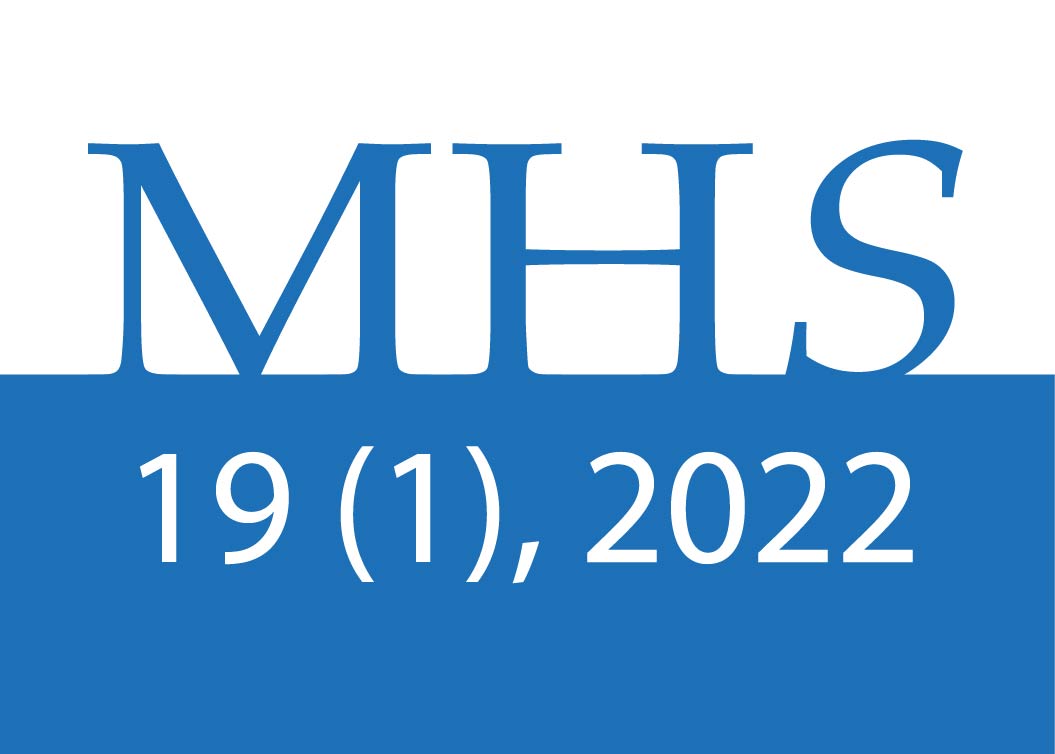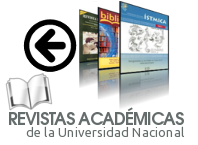Perception of Effort and Objective Levels of Intensity in Physical Education Classes of Primary Schoolchildren According to Gender and Nutritional Status: A Pilot Study
DOI:
https://doi.org/10.15359/mhs.19-1.8Keywords:
perceived exertion, accelerometry, physical education, physical activity levelsAbstract
This study focuses on the analysis of perceived effort and time of moderate and vigorous activities in physical education classes, considering differences based on gender and the nutritional status of schoolchildren. A total of 95 children in 5th and 6th grade of primary school in the city of Coyhaique, Chile, participated in the study. The EPInfant scale was used to assess the perceived effort, and Actigraph GT3X+ accelerometers were used to determine the time of moderate and vigorous activity. No significant differences were found in the perceived effort by gender (p=0.144); instead, by nutritional status, obese students indicated a higher perceived effort than students with a normal weight (p=0.220). Regarding moderate and vigorous activities in Physical Education class, the boys were significantly more active than the girls (p=0.017). In contrast, normal-weight children were slightly more active at this intensity level, but this difference was not statistically significant (p=0.622). The effort in Physical Education classes has been perceived as more demanding by the obese students; for this reason, it is important to understand the physical and motor difficulties that this group presents. Likewise, girls have participated for a shorter time in moderate and vigorous intensities, being pertinent to look for didactic strategies to increase the time of their participation.
References
Aubert, S., Barnes, J. D., Abdeta, C., Abi Nader, P., Adeniyi, A. F., Aguilar-Farias, N., Andrade, J., Brazo-Sayavera, J., Cardon, G., Chen-Kang, C., Delisle, C., Demetriou, Y., Draper, C., Edwards, L., Emeljanovas, A., Gába, A., Galaviz, K., González, S., Herrera-Cuenca, M... Tremblay, M. S. (2018). Global Matrix 3.0 Physical Activity Report Card Grades for Children and Youth: Results and Analysis from 49 Countries. Journal of Physical Activity & Health, 15(S2), S251-S273. https://doi.org/10.1123/jpah.2018-0472
Caamaño, F., Delgado, P., Jerez, D. & Osorio, A. (2016). Bajos niveles de rendimiento físico, VO2 max y elevada prevalencia de obesidad en escolares de 9 a 14 años de edad. Nutrición hospitalaria, 33(5), 565. https://doi.org/10.20960/nh.565
Calahorro, F., Torres-Luque, G., López-Fernández, I. & Álvarez, E. (2014). Niveles de actividad física y acelerometría: recomendaciones y patrones de movimiento en escolares. Cuadernos de Psicología del Deporte, 14(3), 129-140. https://doi.org/10.4321/S1578-84232014000300014
Cárcamo, J. (2012). El profesor de Educación Física desde la perspectiva de los escolares. Estudios Pedagógicos (Valdivia), 38(1), 105-119. https://doi.org/10.4067/S0718-07052012000100006
Cárcamo-Oyarzún, J., Carrasco-Alarcón, V., Espinoza, J. M. & Martínez-Salazar, C. (2019). La intensidad del esfuerzo en clases de Educación Física. Relación entre percepción y cuantificación objetiva de estudiantes y profesores. Retos, (36), 384-390. https://doi.org/10.47197/retos.v36i36.67925
Cárcamo-Oyarzún, J., Wydra, G., Hernández-Mosqueira, C., Peña-Troncoso, S. & Martínez-Salazar, C. (2020). La utilidad de Educación Física según escolares de Alemania y Chile. Cadernos de Pesquisa, 50(175), 96-112. https://doi.org/10.1590/198053146232
Cárcamo-Oyarzún, J., Estevan, I. & Herrmann, C. (2020). Association between Actual and Perceived Motor Competence in School Children. International Journal of Environmental Research and Public Health, 17(10). https://doi.org/10.3390/ijerph17103408
Cárcamo-Oyarzún, J., & Herrmann, C. (2020). Validez de constructo de la batería MOBAK para la evaluación de las competencias motrices básicas en escolares de educación primaria. Revista Española de Pedagogía, 78(276). https://doi.org/10.22550/REP78-2-2020-03
Castañer, M., Saüch, G., Camerino, O., Sánchez-Algarra, P. & Anguera, M. T. (2015). Percepción de la intensidad al esfuerzo: un estudio multi-method en actividad física. Cuadernos de Psicología del Deporte, 15(1), 83-88. https://doi.org/10.4321/S1578-84232015000100008
D'Hondt, E., Deforche, B., Vaeyens, R., Vandorpe, B., Vandendriessche, J., Pion, J., Philippaerts, R., Bourdeaudhuij, I., & Lenoir, M. (2011). Gross motor coordination in relation to weight status and age in 5- to 12-year-old boys and girls: A cross-sectional study. International Journal of Pediatric Obesity, 6(2-2), e556-64. https://doi.org/10.3109/17477166.2010.500388
Fairclough, S. & Stratton, G. (2005). Physical Activity Levels in Middle and High School Physical Education: A Review. Pediatric Exercise Science, 17(3), 217-236. https://doi.org/10.1123/pes.17.3.217
Fuentes Azpiroz, M., Feu, S., Jiménez, C. & Calleja-González, J. (2013). Perceived exertion effort in mini basketball players and its relationship with training volume. Revista de Psicología del Deporte, 22(1), 205-208. https://archives.rpd-online.com/article/view/1323.html
Gao, Z., Oh, H. & Sheng, H. (2011). Middle school students' body mass index and physical activity levels in physical education. Research Quarterly for Exercise and Sport, 82(1), 145-150. https://doi.org/10.1080/02701367.2011.10599732
Hernández, J. L. & Velázquez, R. (2007). La educación física, los estilos de vida y los adolescentes: Cómo son, cómo se ven, qué saben y qué opinan: estudio de la población escolar y propuestas de actuación (1ª ed.). Barcelona: Graó.
Hernández-Álvarez, J. L., del-Campo-Vecino, J., Martínez-de-Haro, V. & Moya-Morales, J.M. (2010). Percepción de esfuerzo en Educación Física y su relación con las directrices sobre actividad física. Revista Internacional de Medicina y Ciencias de la Actividad Física y el Deporte, 10(40), 609-619. http://cdeporte.rediris.es/revista/revista40/artpercepcion185.htm
Hollis, J. L., Williams, A. J., Sutherland, R., Campbell, E., Nathan, N., Wolfenden, L., Morgan, P., Lubans, D., & Wiggers, J. (2016). A systematic review and meta-analysis of moderate-to-vigorous physical activity levels in elementary school physical education lessons. Preventive Medicine, 86, 34-54. https://doi.org/10.1016/j.ypmed.2015.11.018
Karnik, S. & Kanekar, A. (2012). Childhood obesity: A global public health crisis. International Journal of Preventive Medicine, 3(1), 1-7. https://pubmed.ncbi.nlm.nih.gov/22506094/
Lagally, K. M. (2013). Using Ratings of Perceived Exertion in Physical Education. Journal of Physical Education, Recreation & Dance, 84(5), 35-39. https://doi.org/10.1080/07303084.2013.779533
Lobstein, T., Baur, L. & Uauy, R. (2004). Obesity in children and young people: A crisis in public health. Obesity Reviews, 5 (1), 4-104. https://doi.org/10.1111/j.1467-789X.2004.00133.x
McKenzie, T. L., Marshall, S. J., Sallis, J. F. & Conway, T. L. (2000). Student activity levels, lesson context, and teacher behavior during middle school physical education. Research Quarterly for Exercise and Sport, 71(3), 249-259. https://doi.org/10.1080/02701367.2000.10608905
McKenzie, T. L., Sallis, J. F. & Nader, P. R. (1992). SOFIT: System for Observing Fitness Instruction Time. Journal of Teaching in Physical Education, 11(2), 195-205. https://doi.org/10.1123/jtpe.11.2.195
Ministerio de Educación de Chile (2013a). Bases curriculares de Educación Física y Salud: 7º a 2º Medio. Santiago: Mineduc. https://www.curriculumnacional.cl/portal/Educacion-General/Educacion-fisica-y-salud/
Ministerio de Educación de Chile (2013b). Educación Física y Salud. Programa de estudio cuarto año básico. Santiago: Mineduc. https://www.curriculumnacional.cl/portal/Educacion-General/Educacion-fisica-y-salud/
Moral, L. & Martínez, V. (2004). El compromiso cardiovascular de la jornada escolar. Madrid: C.V. Ciencias del Deporte.
Organización Mundial de la Salud (2020). Directrices de la OMS sobre actividad física y hábitos sedentarios. https://www.who.int/publications/i/item/9789240014886 .
Organización Mundial de la Salud (2016). Report of the commission on ending childhood obesity. http://apps.who.int/iris/bitstream/handle/10665/204176/9789241510066_eng.pdf?sequence=1
Rodríguez, I. & Gatica, D. (2016). Percepción de esfuerzo durante el ejercicio: ¿Es válida su medición en la población infantil? Revista chilena de enfermedades respiratorias, 32(1), 25-33. https://doi.org/10.4067/S0717-73482016000100005
Rodríguez, I., Zenteno, D., Cisternas, L., Rodríguez, P., Reyes, G. & Troncoso, K. (2015). Construcción y evaluación de EPInfant: una escala para la medición del esfuerzo percibido en la población pediátrica. Archivos Argentinos de Pediatría, 113(6), 550-557. https://doi.org/10.5546/aap.2015.550
Rodríguez-Marroyo, J. A. & Antoñán, C. (2015). Validity of the session rating of perceived exertion for monitoring exercise demands in youth soccer players. International Journal of Sports Physiology and Performance, 10(3), 404-407. https://doi.org/10.1123/ijspp.2014-0058
Rodríguez-Núñez, I. & Manterola, C. (2016). Initial validation of the scale of perceived exertion (EPInfant) in Chilean children. Biomédica: Revista del Instituto Nacional de Salud, 36(1), 29–38. https://doi.org/10.7705/biomedica.v36i1.2720
Rosa, A., García, E., Pérez, J. J. & Rodríguez, P. L. (2016). Estado de peso, condición física y satisfacción con la vida en escolares de educación primaria. Estudio piloto. MHSalud: Revista en Ciencias del Movimiento Humano y Salud, 13(2). https://doi.org/10.15359/mhs.13-2.2
Sallis, J. F., Bull, F., Guthold, R., Heath, G. W., Inoue, S., Kelly, P., Oyeyemi, A., Pérez, L., Richards, J., & Hallal, P. C. (2016). Progress in physical activity over the Olympic quadrennium. The Lancet, 388(10051), 1325-1336. https://doi.org/10.1016/S0140-6736(16)30581-5
Sasaki, J. E., John, D. & Freedson, P. S. (2011). Validation and comparison of ActiGraph activity monitors. Journal of Science and Medicine in Sport, 14(5), 411-416. https://doi.org/10.1016/j.jsams.2011.04.003
Stratton, G. (1996). Children’s Heart Rates during Physical Education Lessons: A Review. Pediatric Exercise Science, 8(3), 215-233. https://doi.org/10.1123/pes.8.3.215
Tremblay, M. S., Aubert, S., Barnes, J. D., Saunders, T. J., Carson, V., Latimer-Cheung, A. E., Chastin, S., Altenburg, T., & Chinapaw, M. J. M. (2017). Sedentary Behavior Research Network (SBRN) - Terminology Consensus Project process and outcome. The International Journal of Behavioral Nutrition and Physical Activity, 14(1), 75. https://doi.org/10.1186/s12966-017-0525-8
Van Beurden, E., Barnett, L.M., Zask, A., Dietrich, U.C., Brooks, L.O. & Beard, J. (2003). Can we skill and activate children through primary school physical education lessons? “Move it Groove it”—a collaborative health promotion intervention. Preventive Medicine, 36(4), 493-501. https://doi.org/10.1016/S0091-7435(02)00044-0
Williams, J. G., Eston, R. & Furlong, B. (1994). Cert: A perceived exertion scale for young children. Perceptual and Motor Skills, 79(3 Pt 2), 1451-1458. https://doi.org/10.2466/pms.1994.79.3f.1451
Wydra, G. (2009). Belastungszeiten und Anstrengung im Sportunterricht. Sportunterricht, 58(5), 129-136. https://www.sportpaedagogik-sb.de/pdf/2009/Sportunterricht%202009.pdf
Wydra, G. (2010). Untersuchungen zur Belastungsintensität im Sportunterricht. En P. Frei & S. Körner (Ed.), Ungewissheit. Sportpädagogische Felder im Wandel (pp. 227-234). Hamburgo: Feldhaus.
Yelling, M., Lamb, K. L. & Swaine, I. L. (2002). Validity of a Pictorial Perceived Exertion Scale for Effort Estimation and Effort Production During Stepping Exercise in Adolescent Children. European Physical Education Review, 8(2), 157-175. https://doi.org/10.1177/1356336X020082007
Published
How to Cite
Issue
Section
License
General conditions
MHSalud: Journal in Human Movement Sciences and Health by the Universidad Nacional is cover under a Creative Commons Atribución-NoComercial-SinDerivadas 3.0 Costa Rica license.
The journal is hosted in open access repositories such as the Institutional Repository of the Universidad Nacional, the Kimuk Repository of Costa Rica and La Referencia.
The editorial source of the journal must be recognized. Use the doi identifier for this purpose.
Self-archiving policy: The journal allows the self-archiving of the articles in their peer-reviewed version, edited and approved by the Editorial Board of the Journal to be available in Open Access through the Internet. More information in the following link: https://v2.sherpa.ac.uk/id/publication/25815



















